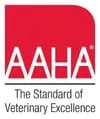What role does diet play in the treatment of diabetes mellitus in cats?
With diet, we attempt to supply adequate nutrients, maintain the ideal body weight, maintain proper levels of blood glucose, and provide for any underlying diseases or conditions. Also important, along with the actual diet, are the number of feedings, the quantity fed, and the relationship of feedings to insulin administration.
What are the calorie needs of diabetic cats?
In general, the caloric needs of a diabetic cat are the same as those of a normal cat.  If the cat is obese, the daily calorie intake is reduced by 25%, under the guidance of your veterinarian. The cat should not lose more than 3% of his body weight per week. Too rapid weight reduction can lead to hepatic lipidosis. As weight decreases, the insulin dose would also decrease in most cases. If a cat is underweight, feeding foods with high caloric density (a large number of calories in a small amount of food) may hasten weight gain.
If the cat is obese, the daily calorie intake is reduced by 25%, under the guidance of your veterinarian. The cat should not lose more than 3% of his body weight per week. Too rapid weight reduction can lead to hepatic lipidosis. As weight decreases, the insulin dose would also decrease in most cases. If a cat is underweight, feeding foods with high caloric density (a large number of calories in a small amount of food) may hasten weight gain.
How often should a diabetic cat be fed?
Cats receiving insulin twice a day are usually given half of their daily meal at the time of each dose. It is very important that your cat eats around the time the insulin is administered, or his blood glucose level may go too low. For some cats that tend to be finicky, it may be best to feed the cat right before the scheduled insulin injection. If he does not eat, you may need to postpone or lower the insulin injection. Always consult with your veterinarian, however, before changing the dose or timing of the injection or feeding.

What type of diet should be fed?
- High fiber: High amounts of fiber in the diet can affect the absorption and metabolism of glucose and fat in the diet. The fiber will slow glucose absorption from the digestive tract so there is not a high peak in blood glucose level right after eating. High fiber diets also promote weight loss. To be most effective, diets with high fiber must also contain significant amounts of complex carbohydrates. These diets can decrease the need for insulin. High fiber diets can result in an increase in intestinal gas, an increase in the frequency and amount of stool produced, and may not be as palatable as other diets.
- High Protein and Fat: Recent studies have suggested that a diet high in protein and fat, and low in carbohydrates may be more beneficial than high fiber diets. High protein and fat levels are typically found in kitten foods (especially canned) or in new diets made specifically for diabetic cats (such as Purina Veterinary Diet DM or Hills prescription diet M/D). Initial studies using a canned high protein/low carbohydrate diet (Hill's Feline Growth) and the drug acarbose have shown that 58% of cats can discontinue insulin injections and those with continued insulin requirements could be regulated on a much lower dosage ( 1 unit twice daily). In comparing canned high fiber diets vs. low carbohydrate diets, cats fed low carbohydrate diets were 10 times more likely to discontinue insulin injections.
Since the dietary requirements of diabetic cats depend upon numerous factors, discuss your cat's diet with your veterinarian. Do not change your cat's diet except under the direction of your veterinarian.
Should diabetic cats be fed dry food, canned food, or semi moist?
Canned foods are generally preferred. Semi moist foods are not a good choice of diet for diabetic cats. These foods often contain a relatively high sugar content.
May a diabetic cat be fed table scraps?
A diabetic cat should not be fed table scraps. Feeding table scraps will change his insulin needs.
Can the diet of a diabetic cat be changed?
Remember that the type, dose, and frequency of administration of insulin are determined using a blood glucose profile while the cat is eating a specific diet. Changing the diet, even from canned food to dry food, may change the insulin needs of the cat. Always consult with your veterinarian if you would like to change your cat's diet, or if your cat is not eating well.
determined using a blood glucose profile while the cat is eating a specific diet. Changing the diet, even from canned food to dry food, may change the insulin needs of the cat. Always consult with your veterinarian if you would like to change your cat's diet, or if your cat is not eating well.
Summary
Diet is an essential part of controlling the blood glucose level in diabetic cats, and in reaching and maintaining ideal weight. In general, diabetic cats should be fed diets high in protein and fat. Diets high in dietary fiber may serve as an alternative. The form of the food (dry or canned), ingredients, amount fed, and frequency and timing of feeding all contribute to the ability to control the blood glucose level. These factors should remain constant from day to day; changing these factors could change a cat's insulin needs.


